© 2025 MJH Life Sciences™ , Patient Care Online – Primary Care News and Clinical Resources. All rights reserved.
Quiz: What's New in COPD for the New Year
Topics include: Role of antibiotics for acute exacerbations; updates on long-term oxygen therapy; COPD-PCI connection, plus more.
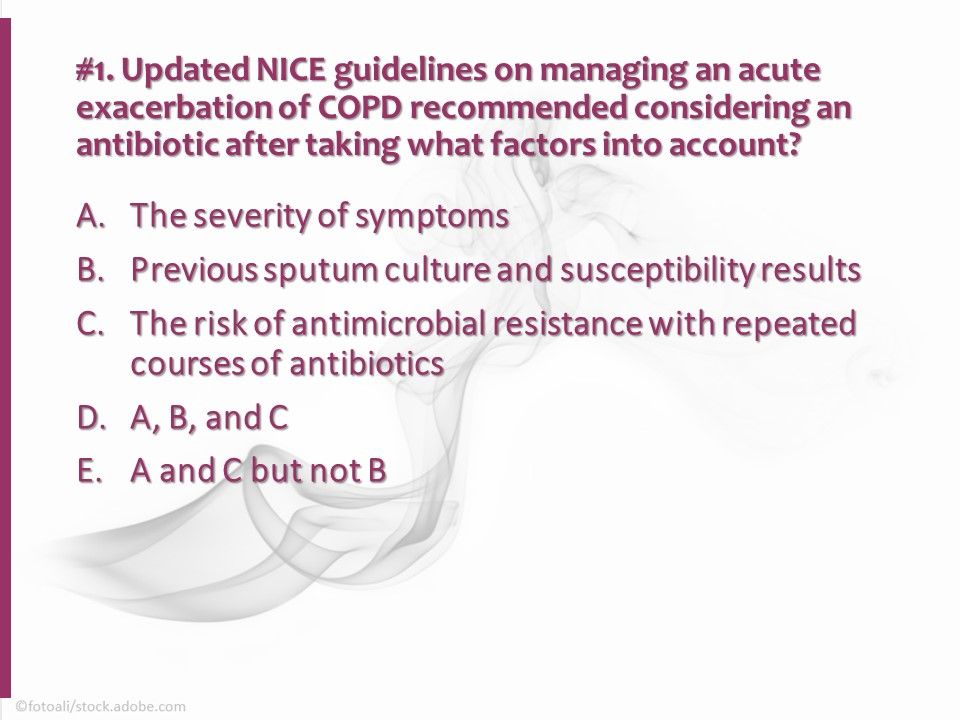
#1. Updated NICE guidelines on managing an acute exacerbation of COPD recommended considering an antibiotic after taking which of the above factors into account?
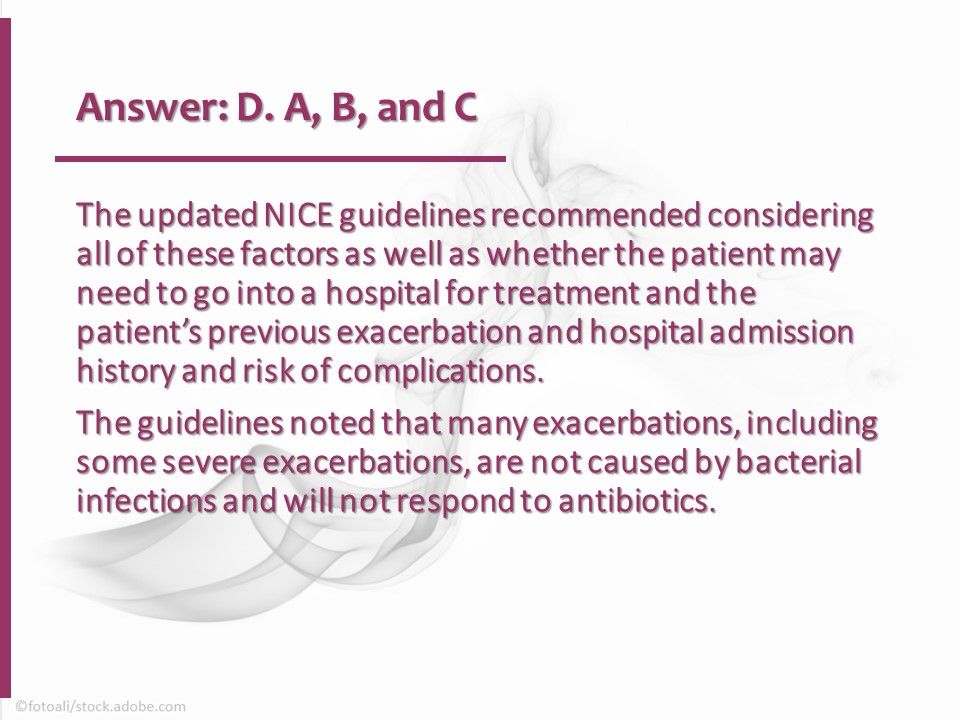
Answer: D. A, B, and C. NICE guidelines recommend that all these factors be considered as well as whether hospitalization may be necessary, the patient’s previous exacerbation and hospital admission history, and risk of complications. The guidelines note that bacterial infections are not always the cause of even severe exacerbations, thus they will not respond to antibiotics.
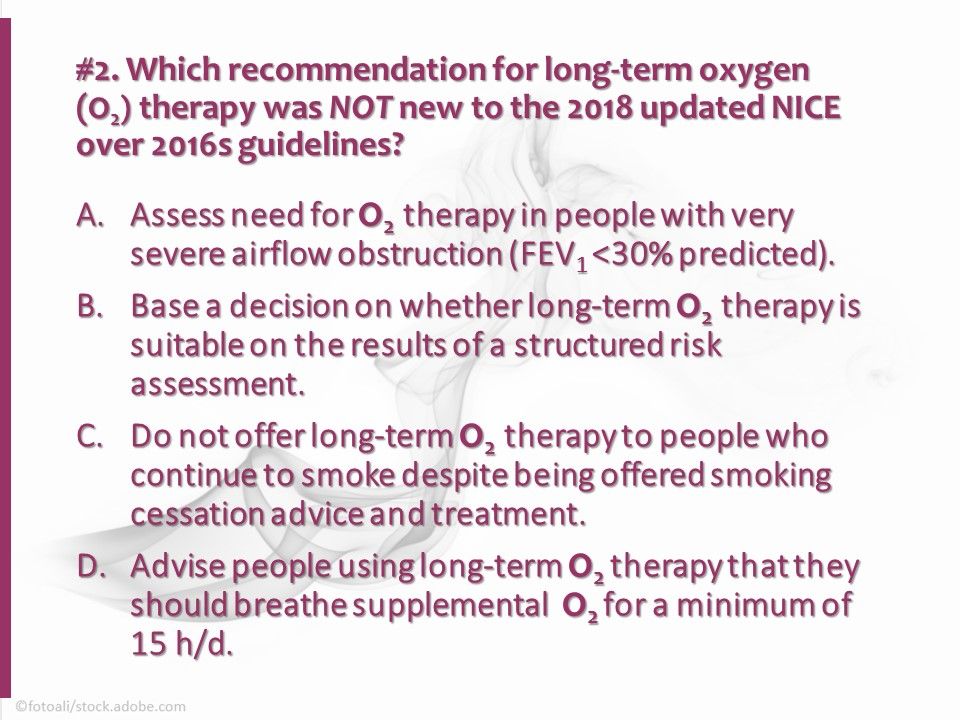
#2. Which of the above recommendation for long-term oxygen (O2) therapy was NOT new to the 2018 updated NICEover 2016s guidelines?

Answer: A. Assess the need for O2 therapy in people with very severe airflow obstruction (FEV1 <30% predicted). The recommendation for assessing the need for oxygen therapy, presented in previous NICE guidelines, included very severe airflow obstruction, cyanosis, polycythemia, peripheral edema, a raised jugular venous pressure, and oxygen saturations of 92% or less breathing air.
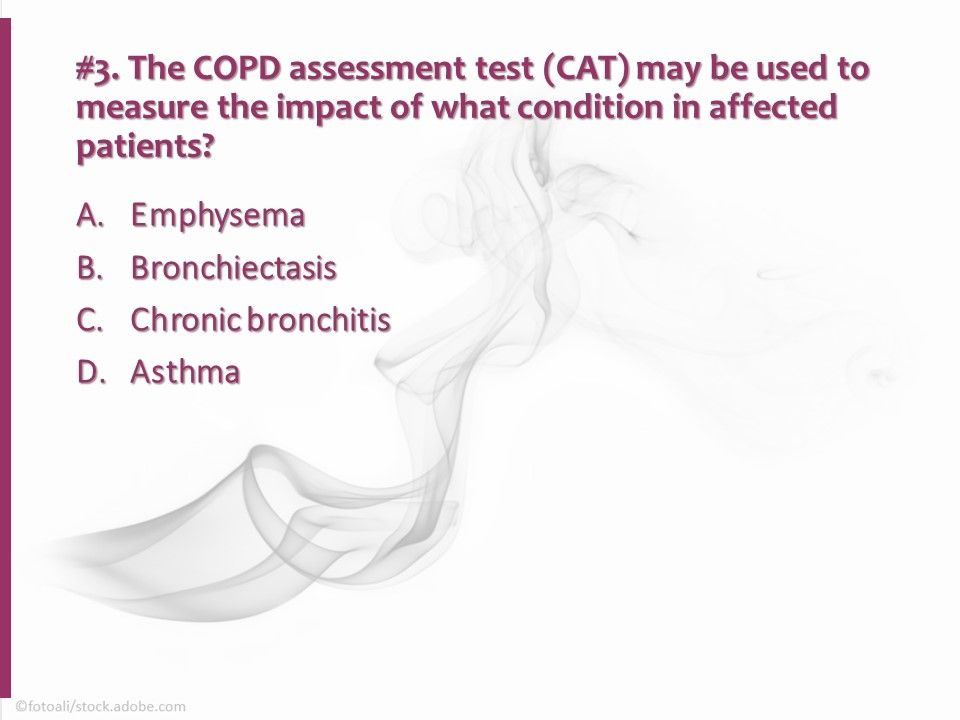
#3. The COPD assessment test (CAT) may be used to measure the impact of which condition listed above in affected patients?
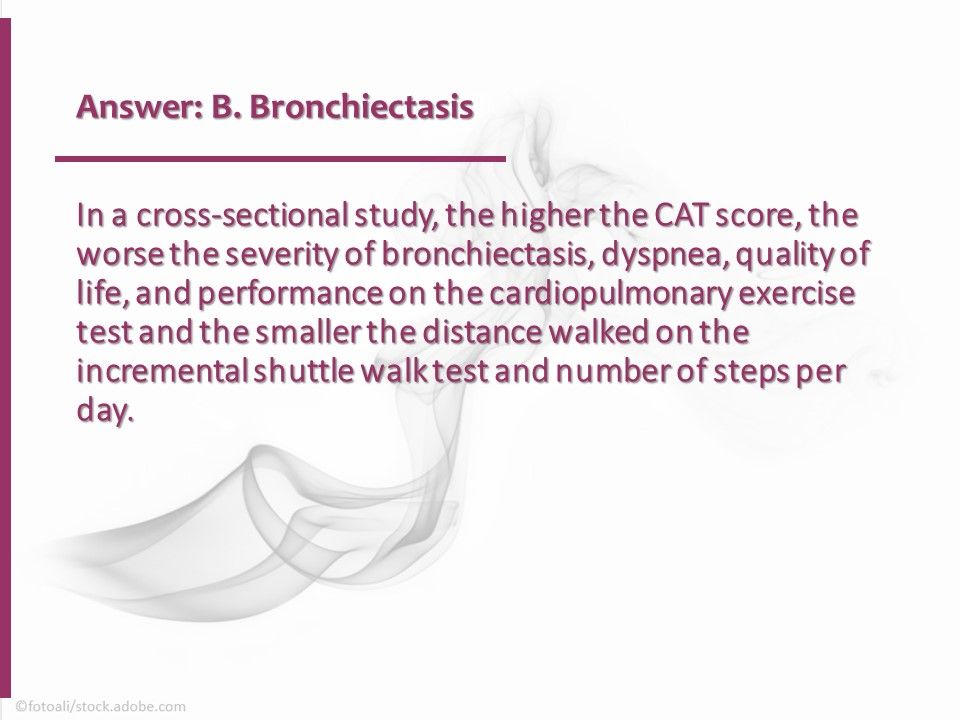
Answer: B. Bronchiectasis. In a cross-sectional study, the higher the CAT score, the worse the severity of bronchiectasis, dyspnea, quality of life, and performance on the cardiopulmonary exercise test and the smaller the distance walked on the incremental shuttle walk test and number of steps per day.
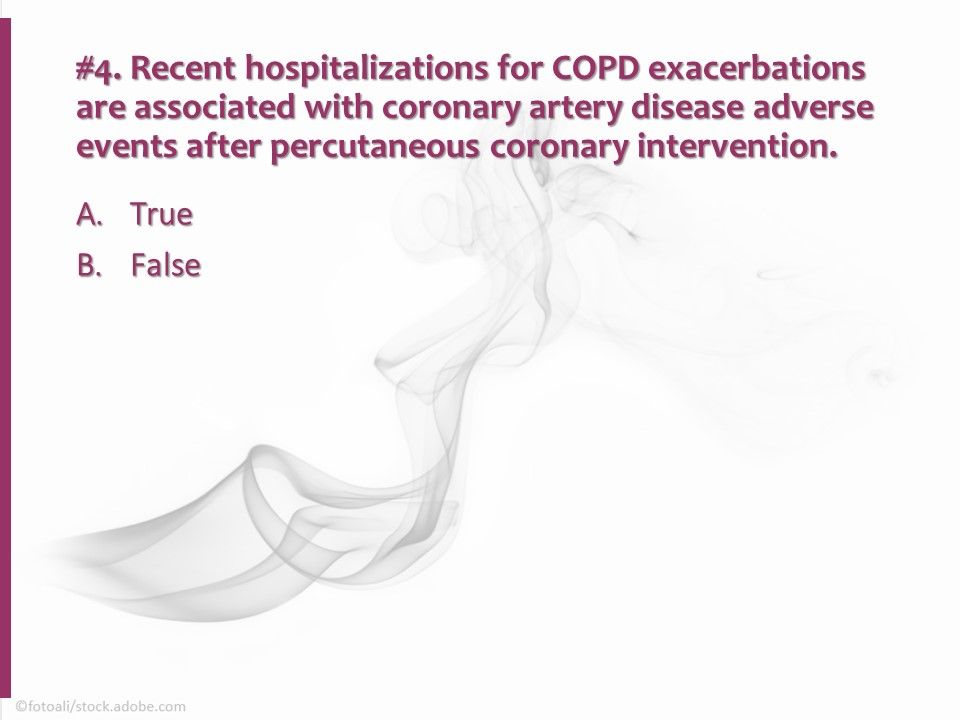
#4. True or False: Recent hospitalizations for COPD exacerbations are associated with coronary artery disease adverse events after percutaneous coronary intervention.

Answer: A. True. COPD was independently associated with increased risks of hospital mortality, overall mortality, ischemic events, cerebrovascular events, and major adverse cardiac and cerebrovascular events during follow-up after percutaneous coronary intervention.
Find out what you know about what’s new in COPD diagnosis and management including updates to the NICE guidelines, a study on the use of the CAT, and other developments for 2019. Click through the short quiz below, and good luck.






